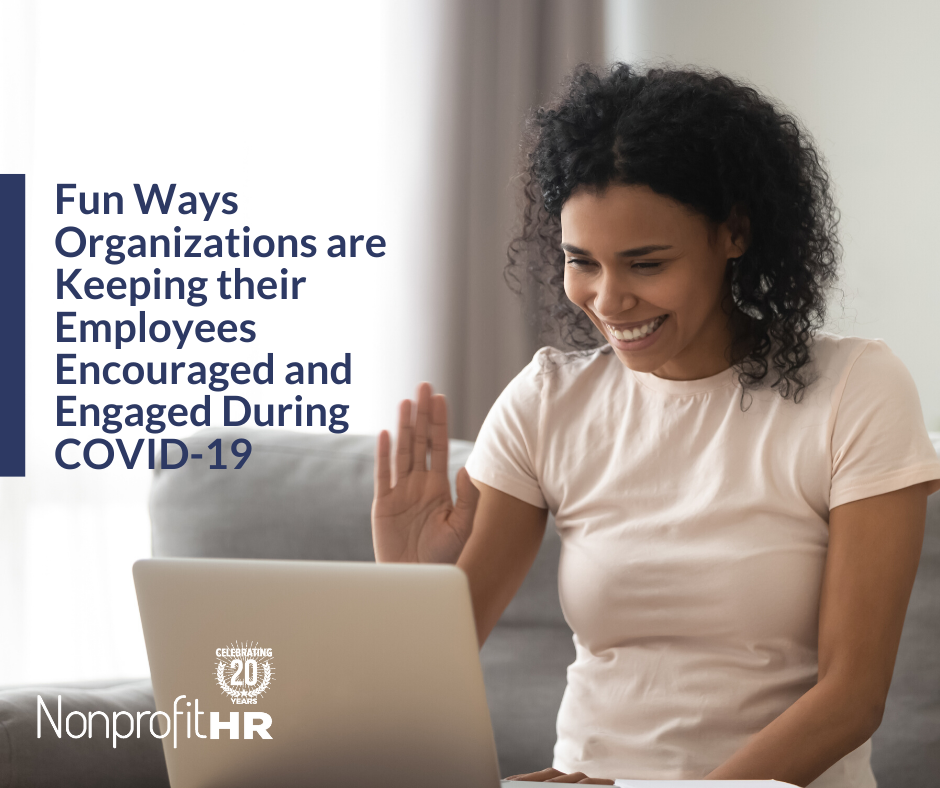WTOP: 5 ways nonprofits can…
Many recognized Equal Pay Day last April but some believe we may need to observe this symbolic day much later in the year. Just last year, the Institute for Women’s Policy Research (IWPR) published findings from a study asserting that the gender wage gap is much larger than we thought. According to IWPR’s research, women earn 49 cents for every dollar earned by a man, not the 80% ratio most often cited and referenced. Others think that IWPR’s research adds to a cloud of misleading coverage about gender pay equality. Add in the distinct terminology that is used interchangeably—wage vs. earning gap—and gender pay equity discussions can be confusing.
Confusion aside, the reality is that many men and women have unconscious biases about the value of work done by both sexes. These biases often reveal themselves in the lack of women in senior leadership positions and discrepancies in their pay. The Center for American Progress states that women hold more than half (52%) of all management- and professional-level jobs in all sectors but they tend to be poorly represented in more senior roles. Luckily, findings from Guidestar’s 2018 Nonprofit Compensation report show that this leadership gap may be closing. More women are now leading organizations as CEOs with this shift being more apparent in organizations with budgets between $25 million and $50 million. In these organizations, female leadership increased from 20% to 30%.
The closing leadership gap, however, is still shadowed by a compensation gap, especially in large organizations. Guidestar finds that compensation of females lags behind male compensation when comparing across similar positions at similar organizations. The gap ranges from 4% to 20% depending on the organization’S budget size. Smaller organizations (budgets of $250 thousand or less) reflect a 4% gap and large organizations (budgets of greater than $50 million) report a 20% gap. It is still worth noting that Guidestar’s research shows some decline in the size of the gap from 2015 to 2016, with the size of the gap at mid-sized nonprofits showing the greatest reduction.
Still, your organization’s practices can add to narrowing internal compensation gaps. Here are three ways to begin:
1. Tend to your leadership pipeline: Despite growing educational attainment among women, implicit and explicit gender biases present roadblocks to leadership. Consider the ways your organization hires, promotes, and prepares women for leadership positions. Establish internal support networks that include mentors and sponsors. If funding or capacity are lacking provide low- to no-cost resources that teach women how to develop their leadership skills (for example links to articles and reports on networking, pay negotiation, developing impactful mentor/sponsor relationships).
2. Audit pay and practice pay transparency: Conducting pay audits provides evidence if, and where, wage inequities exist. Pay particular attention to pay gaps that exist in leadership positions just below the chief officer level—apparently where the inequity tends to persist. Pay transparency highlights any trends toward bias and often requires organizations to establish solid performance measures that justify pay scales.
3. Adjust your benefits structure: Employment gaps of a year or more tend to equate to wage and advancement penalties. Offering parent and caregiver benefits (PTO, flex work options, onsite or subsidized childcare) to males and females helps to spread the caregiver responsibility and reduce the amount of time women spend out of the workforce.IWPR research mentioned above has been argued to overlook the significant shifts in factors that influence women’s earning potential over the past six years; just think about higher education and the #MeToo movement. And again, others just don’t believe the gap exists or contort discussions about pay equity by focusing on terminology and ignoring actual practices. Despite disagreement on the size, correct name, or existence of the gap, there are proven ways that nonprofits can ensure that women are paid fairly and afforded leadership opportunities within their organizations. If more organizations work to intentionally correct gender biases that impact women’s earnings. We may no longer need an Equal Pay Day.

by Mishka Parkins
Marketing & Communications Manager
Nonprofit HR





























